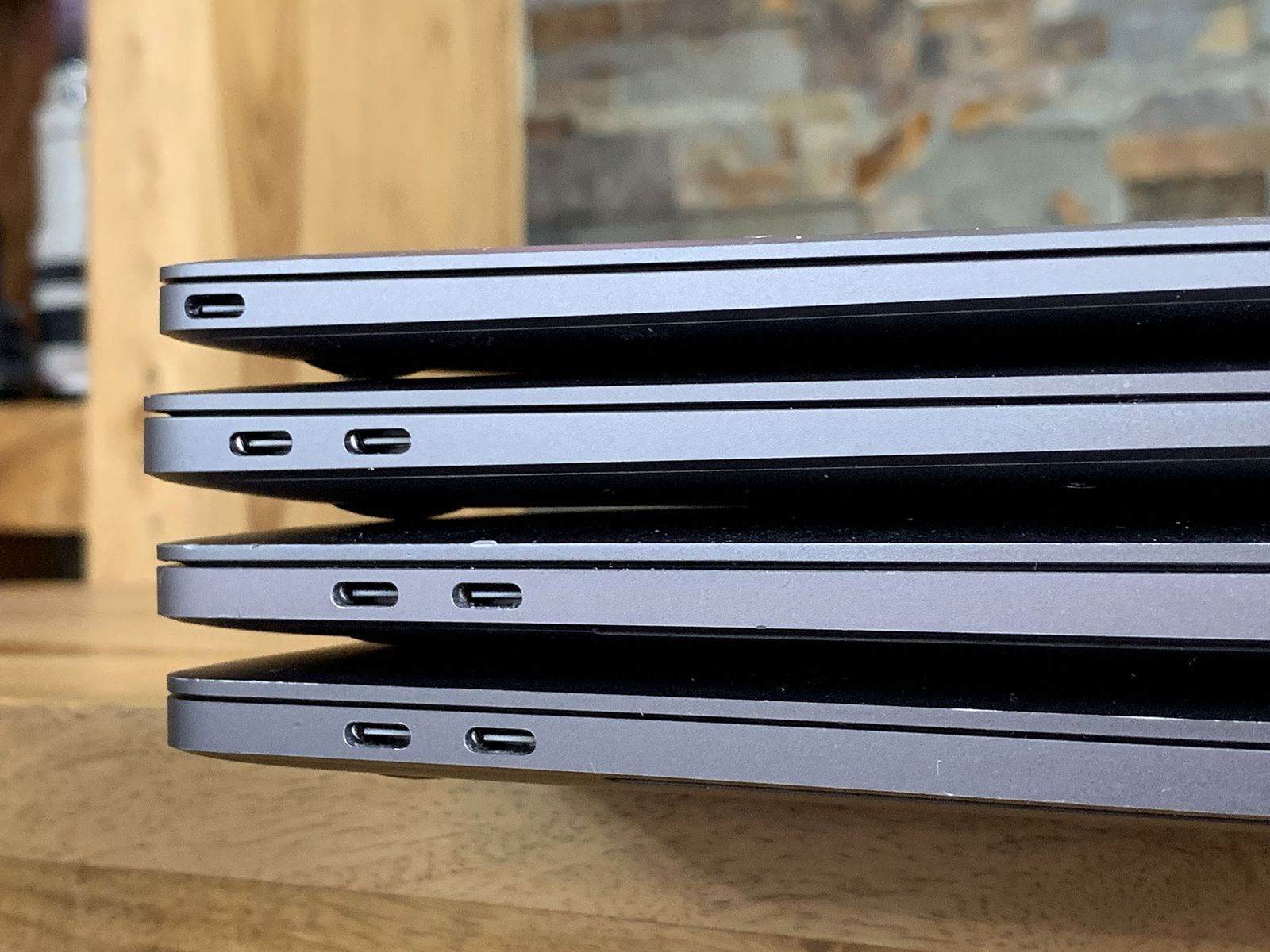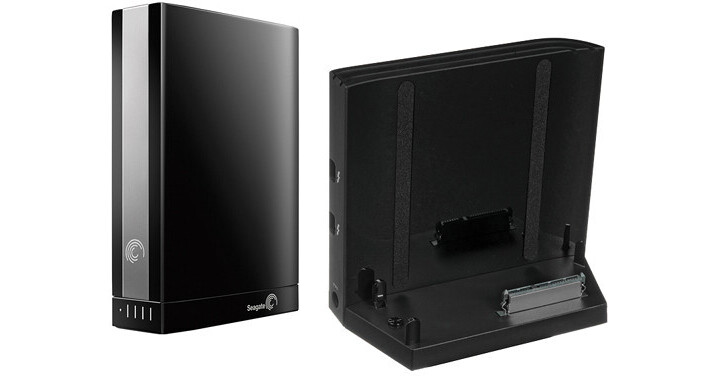External SSD Thunderbolt Backup Drives
- Thunderbolt Backup Drive For Mac
- Thunderbolt External Ssd Drive
- Backup Drive For Mac Thunderbolt Hard Drive
Looking for an external portable hard drive that’s reliable, stylish, and incredibly easy to use? Meet Backup Plus Slim. With sleek colors to choose from and up to 2 TB of capacity for a growing digital library, this portable HDD is compatible with USB 3.0 and both Windows and Mac computers. Backup Plus and GoFlex Desk Thunderbolt Software for Mac. The Seagate Thunderbolt adapter driver is only needed if you are using 3TB or 4TB drives with the Thunderbolt adapter and plan to change drives with other GoFlex adapters (such as USB or FireWire). If you don’t intend to use the drive with other adapters it can be reformatted and the.
Shopping for a ultra-fast PC or Mac compatible Thunderbolt SSD storage solution? Never before has a personal computer interface offered the insanely fast data transfer speeds of the original 10Gbps Thunderbolt, 2nd-generation 20Gbps Thunderbolt 2 drives, and 3rd-generation 40Gbps Thunderbolt 3 storage.Minimally TWENTY times faster than the popular USB 2.0 spec, and double that of the competing 5Gbps USB 3.0 SuperSpeed standard, Thunderbolt outstrips the bandwidth requirements of nearly any single personal computer peripheral available today. Conventional hard drives can't fill a fraction of Thunderbolt's data pipeline. So, solid-state flash memory disk drives are the most logical pairing of the two technologies. A PC or Mac compatible Thunderbolt SSD external backup drive can really leverage the potential bandwidth available for the fastest data backups and file transfers you'll ever experience.
FYI: As an Amazon Associate I earn from qualifying purchases
| Akitio Thunderbolt Drive | Monster Thunderbolt Drive |
|---|---|
| Akitio SSD Neutrino Drive 120GB Thunderbolt SSD | Monster Digital SSD 256GB-512GB-1TB |
| G-Technology Thunderbolt Drive | Oyen Digital Thunderbolt Drive |
|---|---|
| GTech TBolt SSD 1TB SSD Combo Interface | Oyen SSD Mini Pro 256GB Solid-State Portable |
| Transcend Solid-State Drive | Silicon Solid-State Drive |
|---|---|
| Transcend Combo SSD Thunderbolt + USB 3.0 | Smallest Thunderbolt SSD Ever Silicon Power Mini Drive |
Shopping For TunderBolt External SSD Drives
In the 2020's we now have 3 generations of Thunderbolt: The original 10Gbps TBolt and 2nd generation 20Gbps Thunderbolt 2 using the mini DisplayPort interface. The new 40Gbps Thunderbolt 3 spec has adopted the smaller and more widely used Type-C USB 3.1 connector. In fact, Thunderbolt 3 incorporates SuperSpeed+ USB 3.1 10Gbps protocols so that either Thunderbolt or USB-C peripherals can be used on a modern Windows or Mac computer's Thunderbolt 3 port.Who Manufactures Thunderbolt Backup Peripherals?
Major brands include Akitio, G-Technology, SiliconPower, Monster Digital, OWC and LaCie external Thunderbolt SSD backup drive offerings shown above. These laptop-size affordable consumer drives have a single Thunderbolt port for use directly connected to your computer - or at the END of the device chain. To get dual, pass-through ports, you generally have to move up to the multi-drive RAID array type of Thunderbolt data storage products. One of the notably rising entrants into the external SSD drive market is Akitio who was recently acquired by OWC. They've long been a maker of USB, eSata, and FireWire drive enclosures for assembling DIY backup drives. Introducing a single-port Thunderbolt portable SSD drive like the Neutrino shown here (using an Intel OEM SSD) is the first step in recouping their investment, a 256Gb is available as well (using a SanDisk OEM SSD). Akitio has delivered a nice range of standalone Thunderbolt and Thunderbolt 2 and 3 drive enclosures for homebuilt storage solutions using the SSD or HDD drives of your choice.
One of the notably rising entrants into the external SSD drive market is Akitio who was recently acquired by OWC. They've long been a maker of USB, eSata, and FireWire drive enclosures for assembling DIY backup drives. Introducing a single-port Thunderbolt portable SSD drive like the Neutrino shown here (using an Intel OEM SSD) is the first step in recouping their investment, a 256Gb is available as well (using a SanDisk OEM SSD). Akitio has delivered a nice range of standalone Thunderbolt and Thunderbolt 2 and 3 drive enclosures for homebuilt storage solutions using the SSD or HDD drives of your choice.DIY Thunderbolt SSD Storage
 Alot of folks want to cobble their own Thunderbolt data backup drive together with the HDD or SSD drive of their choosing. Unfortunately, at least for single drives, there aren't many choices of standlalone Thunderbolt drive enclosures available. For multi-drive RAID arrays using 2 or more drives, the selection of Thunderbolt enclosures is better, but costlier.
Alot of folks want to cobble their own Thunderbolt data backup drive together with the HDD or SSD drive of their choosing. Unfortunately, at least for single drives, there aren't many choices of standlalone Thunderbolt drive enclosures available. For multi-drive RAID arrays using 2 or more drives, the selection of Thunderbolt enclosures is better, but costlier.| G-Technology Thunderbolt Enclosure | Seagate Thunderbolt Drive Sled |
|---|---|
| 2.5' Thunderbolt SATA Case Ruggedized Thunderbolt Enclosure | Backup Plus Thunderbolt Drive Adapter For Laptop Size SSD or HDD |
Seagate's Thunderbolt drive sled has sadly been discontinued. It let anyone cobble thier own affordable Thunderbolt SSD solution by simply plugging a bare 2.5' laptop SATA SSD drive directly into the portable adapter's SATA connector. It should be noted the Thunderbolt drive converter only has a SINGLE Thunderbolt port like many of the more affordable Thunderbolt storage products for home consumers. It's not capable of daisy-chained with other Thunderbolt devices.
Best SSD For Thunderbolt?
Several factors determine which SSD is the best match for Thunderbolt drives. A Solid-State drive in general relies on several components that determine a SSD's performance: Whether it's a SATA I/II or III 6G drive interface chipset, and which controller chip: Marvell, Indilinx, SandForce, etc. are the brains of the operation. Other factors in the solid-state drive market involve how fast the onboard NAND Flash Memory is, and the clock speed controlling it. Look to Samsung, WD, Crucial and Sandisk for the fastest off-the shelf SSD's shipping this year.It's important to note that LARGER capacity SSD's 480GB and up offer BETTER performance than the smaller models: More banks of chips inside a higher-capacity SSD drive allow more simultaneous reads and writes across the banks of flash memory. As such you'll often see spec sheets quoting different maximum data transfer rates depending on the size of the drive. With solid-state storage, bigger is better - and faster.
Thunderbolt RAID SSD - Power Pair
Want to fill as much of Thunderbolt's pipeline as possible? Think Striped RAID 0 SSD drive setups for peak performance. By striping Reads and Writes across multiple solid-state drives or modules, the highest level of drive transfer speeds become possible. Some may opt for premium top-performance PCIe NVMe SSD's, others may wish to leverage more economical drives paired to get the Thunderbolt drive capacity they need and still fit their budget.The direct 10Gbps pipeline that Thunderbolt taps into via the PCI-Express system bus offers mind blowing backup and data copy speeds compared to USB 3.0 or FireWire provided it's matched with equally fast solid-state SSD storage technologies. A growing range of enterprise, professional and consumer PC and Mac SSD Thunderbolt backup solutions are now shipping.
Thunderbolt Backup Drive For Mac
A Thunderbolt SSD flash memory drive is the best technological match for the insanely high bandwidth that a Thunderbolt inferface provides. With no moving parts, high reliability, zero latency and near-zero access times, they're a perfect match for this cutting-edge computer peripheral interface from Apple and Intel.Currently, a few of the best choices in solid-state backup are LaCie 512GB Thunderbolt SSD dual-drive array which also now offers a 1 Terabyte version for demanding, Pro users. These LaCie high-end models combine dual 256GB/512GB SATA III Solid-State drives for mirrored or striped RAID 0 performance that delivers mind-blowing transfer speeds - at a price. Their Little Big Disk SSD drives also have TWO TBolt ports on the back for daisy-chaining with other devices.

For more affordable consumer options, the single-drive LaCie Rugged USB 3.0 and Thunderbolt SSD has high-speed combo interfaces for both USB 3.0/2.0 or Thunderbolt connectivity. The Thunderbolt Rugged series uses a single SSD drive for respectable performance - and the added value of flexibility to use it with older and non-TBolt equipped USB port Macs or PCs. The latest revision of the solid-state Rugged portable drive now includes a short, integrated Thunderbolt cable for quick connectivity, and still allows optional connection to a USB port if needed.
The Elgato Thunderbolt SSD Drive has been shipping for quite some time. ElGato also uses a single SSD drive module for more modest but still very snappy performance in either 120GB or 240GB capacities - but it's pricing hasn't dropped to be truly competitive with LaCie or other new arrivals in the marketplace. A new 512GB and 1TB SSD drive with combo Thunderbolt + USB 3.0 interface recently shipped, but the price is high.
Please visit the other pages of this site to explore the diverse market of PC and Mac compatible external SSD Thunderbolt drive options for budgets large and small.
You can use Time Machine, the built-in backup feature of your Mac, to automatically back up all of your files, including apps, music, photos, email, documents, and system files. When you have a backup, you can restore files from your backup if the original files are ever deleted from your Mac, or the hard disk (or SSD) in your Mac is erased or replaced.
Create a Time Machine backup
To create backups with Time Machine, all you need is an external storage device. After you connect the device and select it as your backup disk, Time Machine automatically makes hourly backups for the past 24 hours, daily backups for the past month, and weekly backups for all previous months. The oldest backups are deleted when your backup disk is full.
Connect an external storage device

Connect one of the following external storage devices, sold separately. Learn more about backup disks that you can use with Time Machine.
- External drive connected to your Mac, such as a USB, Thunderbolt, or FireWire drive
- External drive connected to an AirPort Extreme Base Station (802.11ac model) or AirPort Time Capsule
- AirPort Time Capsule
- Mac shared as a Time Machine backup destination
- Network-attached storage (NAS) device that supports Time Machine over SMB
Select your storage device as the backup disk
When you connect an external drive directly to your Mac, you might be asked if you want to use the drive to back up with Time Machine. Select Encrypt Backup Disk (recommended), then click Use as Backup Disk.
An encrypted backup is accessible only to users with the password. Learn more about keeping your backup disk secure.
If Time Machine doesn't ask to use your drive, follow these steps to add it manually:
- Open Time Machine preferences from the Time Machine menu in the menu bar. Or choose Apple () menu > System Preferences, then click Time Machine.
- Click Select Backup Disk (or Select Disk, or Add or Remove Backup Disk):
- Select your external drive from the list of available disks. Then select ”Encrypt backups” (recommended) and click Use Disk:
If the disk you selected isn't formatted as required by Time Machine, you're prompted to erase the disk first. Click Erase to proceed. This erases all information on the backup disk.
Enjoy the convenience of automatic backups
Thunderbolt External Ssd Drive
After you select a backup disk, Time Machine immediately begins making periodic backups—automatically and without further action by you. The first backup may take a long time, depending on how many files you have, but you can continue using your Mac while a backup is underway. Time Machine backs up only the files that changed since the previous backup, so future backups will be faster.
To start a backup manually, choose Back Up Now from the Time Machine menu in the menu bar. Use the same menu to check the status of a backup or skip a backup in progress.
Learn more
Backup Drive For Mac Thunderbolt Hard Drive
- If you back up to multiple disks, you can switch disks before entering Time Machine. Press and hold the Option key, then choose Browse Other Backup Disks from the Time Machine menu.
- To exclude items from your backup, open Time Machine preferences, click Options, then click the Add (+) button to add an item to be excluded. To stop excluding an item, such as an external hard drive, select the item and click the Remove (–) button.
- If using Time Machine to back up to a network disk, you can verify those backups to make sure they're in good condition. Press and hold Option, then choose Verify Backups from the Time Machine menu.
- In OS X Lion v10.7.3 or later, you can start up from your Time Machine disk, if necessary. Press and hold Option as your Mac starts up. When you see the Startup Manager screen, choose “EFI Boot” as the startup disk.

Comments are closed.